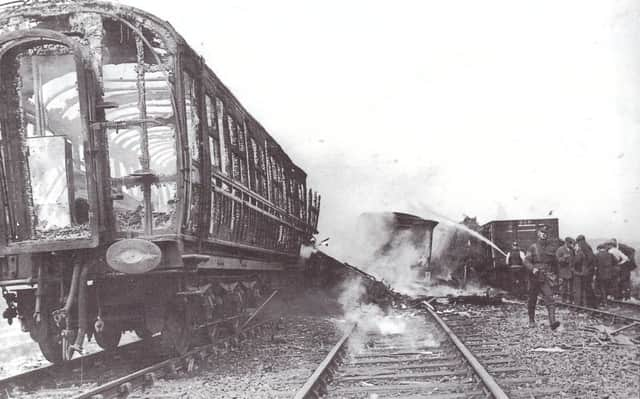Princess Royal to lead Quintinshill rail tribute


With First Minister of Scotland Nicola Sturgeon, Anne will be at Gretna on the Scottish-English border on Friday where, at 6.50am on May 22 1915, a train packed with First World War troops travelling from Larbert in Stirlingshire collided with a local passenger service.
Almost at once, a Glasgow-bound express train smashed into the wreckage at the Quintinshill signal box, setting off a devastating fire which engulfed the troop train, packed with nearly 500 members of the Leith Battalion of the Royal Scots.
Advertisement
Hide AdA total of 214 soldiers were killed, as well as 12 civilians, although some remains were never identified and it is thought that the death toll could have been higher. In addition to the deaths, there were 246 injuries.
The troops were on their way to Liverpool, where they were due to sail to the front line at Gallipoli.
The Princess will attend an ecumenical service at Gretna and will lay a wreath, with a second wreath being laid on behalf of the Royal Scots. On Saturday, Anne and Ms Sturgeon will attend a service in Leith.
On Thursday there will also be a memorial service at Larbert, when a procession involving the military, community groups and local schools will walk from the town’s parish church to Larbert station for an evening service.
There will also be commemorations on Thursday in Carlisle, where a number of people on the local train and express train lived and which was also the base for the railwaymen involved.
At the Carlisle service, presided over by the Lord Lieutenant of Cumbria, Claire Hensman, train drivers from across the industry will each lay a stone at a cairn erected at the town’s station.
Advertisement
Hide AdAfter the disaster, signalman James Tinsley was sentenced to three years’ penal servitude and another signalman, George Meakin, was jailed for 18 months. Both were released in December 1916.
A BBC programme - Quintinshill: Britain’s Deadliest Rail Disaster - being shown this week suggests that some of the worst-injured casualties were shot in acts of mercy because there was no chance of them being rescued.
Advertisement
Hide AdInterviewed for the programme, Colonel Robert Watson of the Royal Scots said: “All those that could be rescued were rescued. Many of them had amputations carried out underneath burning carriages so that they could be rescued.
“But many, of course, were trapped in such a position that they could not be got out or else the fire had taken hold and they could not be got to.”
He went on: “Since then, we have heard stories of some soldiers being shot and some possibly taking their own lives. It has never been formally documented.
“My own personal belief is that it probably did happen, in a sense of compassion, of mercy killing. It is almost impossible, sitting here, to comprehend what it was like that morning.”